
Candida Martinelli's Italophile Site

Main
Page This family-friendly site celebrates Italian culture for the enjoyment of children and
adults. Site-Overview
Download the PDF
copy of this book for free, from this site I have made this
document into a free-to-download PDF. The free
Adobe PDF Reader allows for simple movement between recipes and
chapters using a hyperlinked table of contents and bookmarks, and to search easily by any word, any ingredient. You can
also easily print out the book or sections of the book.
Paperback Version I have used Amazon.com's CreateSpace
print-on-demand company to create a paperback version of this cookbook,
and it is
for sale at cost (6.50$) via Amazon.com. It is 210 pages long.
You may be
wondering what this book has to do with Italophiles. Well... Much of what is
unique about Sicilian cuisine comes from the early Arab-Moor
colonizers of the island who brought with them new agricultural
techniques, new plants and spices, and new cooking traditions.
I have another
page on this site that looks at the links between
the Al Andalus (the same family ruled in Sicily) cuisine, well described
in this ancient cookbook, and today's Sicilian cuisine and Italian
cooking, and Sicily's Arabo-Sicula
cuisine. This page is an
separate introduction to this wonderful book, with a link to the free
version I have created as a PDF book,
that anyone can download from this site. I have other
ancient (medieval) cookbooks on this site, too,
if you are interested. The English text
of the book is a translation by Charles Perry, working from the original Arabic, a
printed copy of the Arabic and its translation into Spanish, and
assisted by an English translation by various persons translating
collaboratively the text from Spanish to English. I have altered the
English translation by: I have made this
document into a free-to-download PDF. The free
Adobe PDF Reader allows for simple movement between recipes and
chapters using a hyperlinked table of contents and bookmarks, and to search easily by any word, any ingredient. You can
also easily print out the book or sections of the book.
Paperback Version I have used Amazon.com's CreateSpace
print-on-demand company to create a paperback version of this cookbook,
and it is
for sale at cost (6.50$) via Amazon.com. It is 210 pages long. This book’s
original title was:
Kitab al tabij fi-l-Maghrib wa-l-Andalus
fi `asr al-Muwahhidin, li-mu'allif mayhul (or majhul). It means:
The Book of Cooking in Maghreb and
Andalus in the era of Almohads, by an unknown author. It is commonly known in English
today as:
The Anonymous Andalusian Cookbook. The book was
complied by a scribe in the 1400s, whose name appeared on the first page
of the text, but the first page has not survived the ages. His work
contains recipes copied from a number of older works in the 1200s, some
surviving and some not surviving independently to today. The major part of
the English translation is by Charles Perry, a scholar, food historian,
and writer of a food column for the L.A. Times. Additional notes are by
various other writers, including myself. Like all ancient
cookbooks, this one is made up of pieces of other cookbooks. Think of
it as a recipe notebook from a busy estate kitchen. The reigning cook
added to his recipe collection by: Periodically, these
cooks published their recipe collections for the honor of their patron,
or for their own honor. Then scribes would copy the books for a client,
or for the book’s owner to give to friends, or as a gift, or even just
for posterity. This cookbook
borrows directly from several well-known cookbooks, all from roughly the
same period. The Andalucía, or
Al-Andalus, of the 1200s was not today’s southern region of
Andalucía in Spain. It was the name used for all of the territory
controlled in Spain by Arab Muslims, originally from North Africa. The
major part of Spain, excluding only it’s Northern regions, was under
Arab rule between 711 and 1492. The Kingdom of Granada was the last
area to fall to the Spanish-Catholic monarchs Ferdinand and Isabella in
what Spain calls a ‘re-conquest’ of their territory. The defeated
Muslims call it a barbarous tragedy. Some Moroccan families still
retain, in a prominent place in their Moroccan homes, the key to their
ancestors’ family home that was taken from them in Al-Andalus during
that period. Al-Andalus was
renowned for its centers of learning, beautiful architecture, and
religious tolerance (http://en.wikipedia.org/wiki/Al-Andalus).
You’ll note several
Jewish recipes in this cookbook because there was a large Jewish
population in Al-Andalus. The severe persecution of this minority group
began only under Ferdinand and Isabella, the Catholic monarchs who
fought for the expulsion, or mass-conversions, or murder of those of
Muslim and Jewish faiths. There are also recipes from other regions
that were under Muslim control, such as Sicily.
The oldest cuisine
in the world (a cuisine being a documented cooking of a settled people)
is the Persian cuisine, which like the Persian Empire, stretches back to
nearly 1000 BC. Many elements of Persian cuisine appear throughout the
Near East and North Africa, and they appear in this cookbook as well.
And many elements of the Persian and the Al-Andalus cuisines appear in
the early European cookbooks. One of the earliest we have is from
ancient Rome, by the cook Apicius. His recipes are very similar to the
recipes in this cookbook. European cuisine
only began to change when: Today, many of the
dishes reported in this 13th century Al-Andalus cookbook are
enjoyed by families in Andalucía, Sicily, Sardinia, and all the
territories that formerly belonged to the Moorish monarchs, especially
in Morocco. The recipes for
bread, actually, are common throughout Asia. The
sausages and meat patties are common throughout these areas and
beyond, but in this predominantly Muslim cookbook, none are made with
pork. Pork is a common meat in today’s non-Muslim regions. But you
will find
goat,
lamb and
mutton recipes, along with lots of
chicken,
egg, eggplant and
fish recipes that are very similar to recipes still used throughout
Southern Europe, as well as Italian frittatas,
fresh and dried pasta, and the
calzone. The most recipes in
any one category are for sweets, which isn’t surprising when you
consider that 3 of the 7 prescribed courses in a meal are sweets. I
have divided the sweets recipes into sub-categories of: Many of the recipes
are similar to sweets that are enjoyed today by people all over the
world, showing how far and wide the Persian and Moorish recipes have
been embraced. In the West, these dishes are usually filtered through
Italian, Spanish, Greek and French cuisines. For example, in this book
with recipes from the 1200s (and earlier), you can find recipes for: The recipes
reported here are mainly of historical interest, but there will be some
hardy hobbyists who will try to follow them. For you, here is a tip:
some of the Moors of Al-Andalus managed to leave, most going across the
straights of Gibraltar to North Africa, to Morocco. So, most of the
dishes in this cookbook are still made today in Morocco, famous for its
very traditional cuisine. Just search for the corresponding Moroccan
recipe, and you’ll find precise measurements of modern ingredients and
easy-to-follow instructions.
A few more words of
warning if you are going to attempt to cook any of these recipes: My thanks to all
who worked on translating this book, and for putting it free on the
Internet. That was very generous of you. I, too, offer this PDF
version of the book that I have edited and rearranged, free to all who
wish to download it, and the print copy at cost. I hope you enjoy a
taste of the Mediterranean’s past, and if you are brave enough (or
foolish enough, perhaps?) to try to cook these dishes, I hope they come
out well. An extra note…my
favorite recipe, for its sheer audacity, is the so-called lamb dish:
Roast Lamb, which was made for the Sayyid Abu al-'Ala in Ceuta The Governor and admiral of
Ceuta, son of the Almohada Caliph Yusuf I, was treated to this calf
stuffed with a lamb, stuffed with various birds, stuffed with smaller
various birds. It think of it as a Russian doll dish. “Take a young, plump lamb,
skinned and cleaned. Make a narrow opening between the thighs and
carefully take out everything inside of it of its entrails. Then put in the interior a
roasted goose and into its belly a roasted hen and in the belly of the
hen a roasted pigeon and in the belly of the pigeon a roasted starling
and in the belly of this a small bird, roasted or fried. All this is
roasted and greased with the sauce described for roasting. Sew up this
opening and place the ram in a hot tannur [clay oven] and leave
it until it is done and browned. Paint it with that sauce and
then place it in the body cavity of a calf which has been prepared
clean. Sew it up and place it in the hot tannur [clay oven] and
leave it until it is done and browned. Then take it out
and present it.” It seems that meals
for the exalted in that era were never just meals; they were
entertainment, too, and very hard work for the cooking staff! Candida Martinelli Visit my Ancient
Cookbooks page Visit my Sicilian
Arabo-Sicula Cuisine Page David Friedman's site with the
original translation A
spice analysis of the book
The Miscellany, a self-published book by that includes several
hundred period recipes, original and worked out versions, a fair
number of which are from the Islamic and Italian sources.
Moroccan recipes from
Recipe Zaar.
Al-Bab.com's links
to recipes and much more about Moroccan food.
Over 300 Astray's
Moroccan
recipes.

An
Anonymous Al-Andalus Cookbook from the 13th Century
- Sicily's Arabo-Sicula Cuisine
![]()
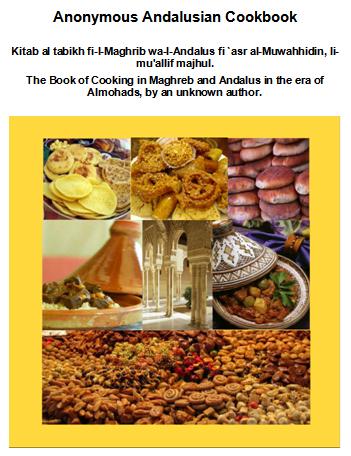



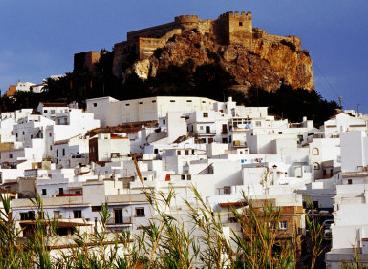
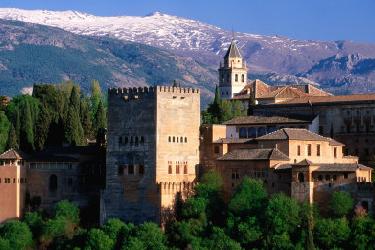
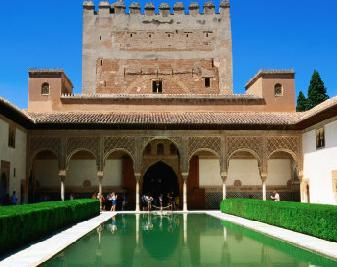
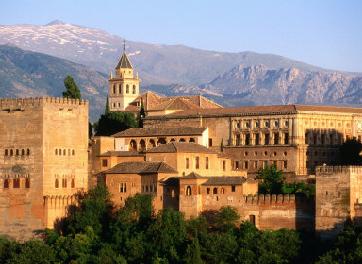

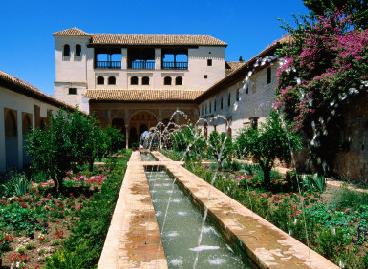
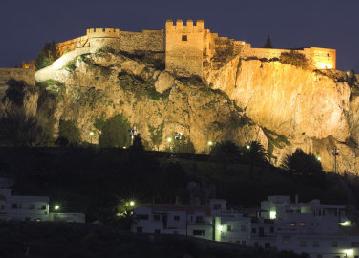
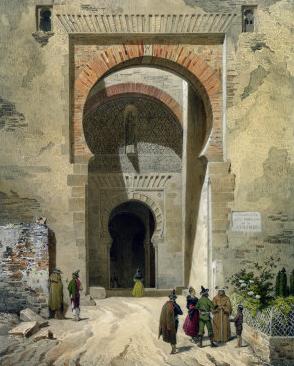
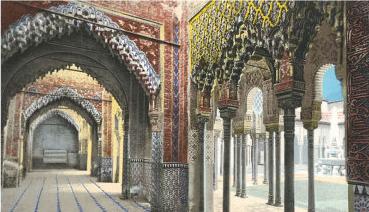
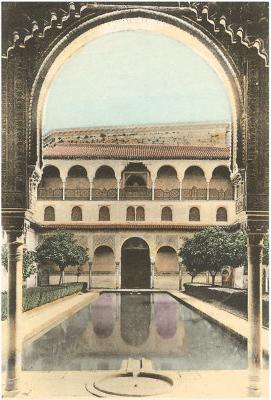
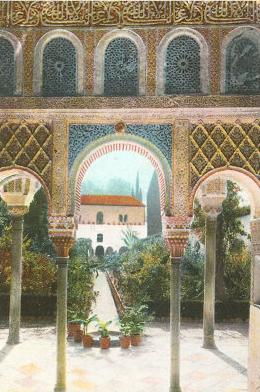
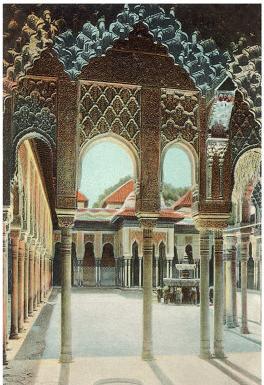
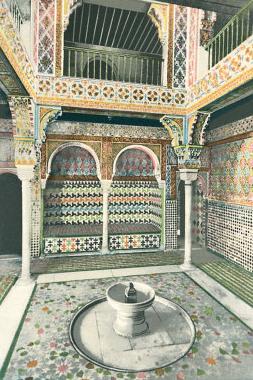
My Preface to the Book

Some Great Links